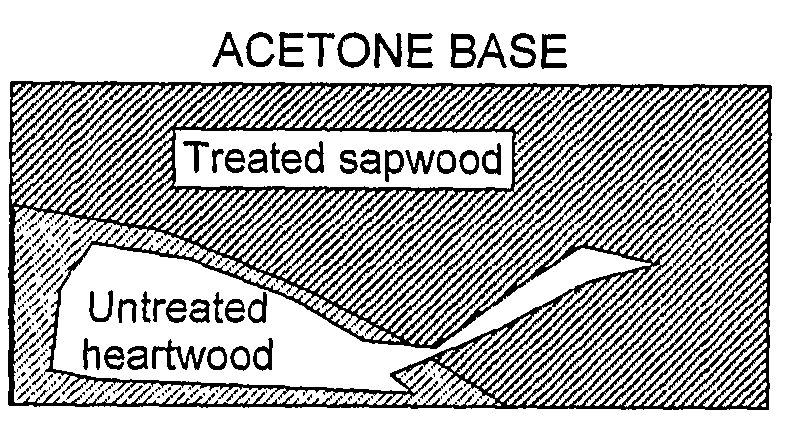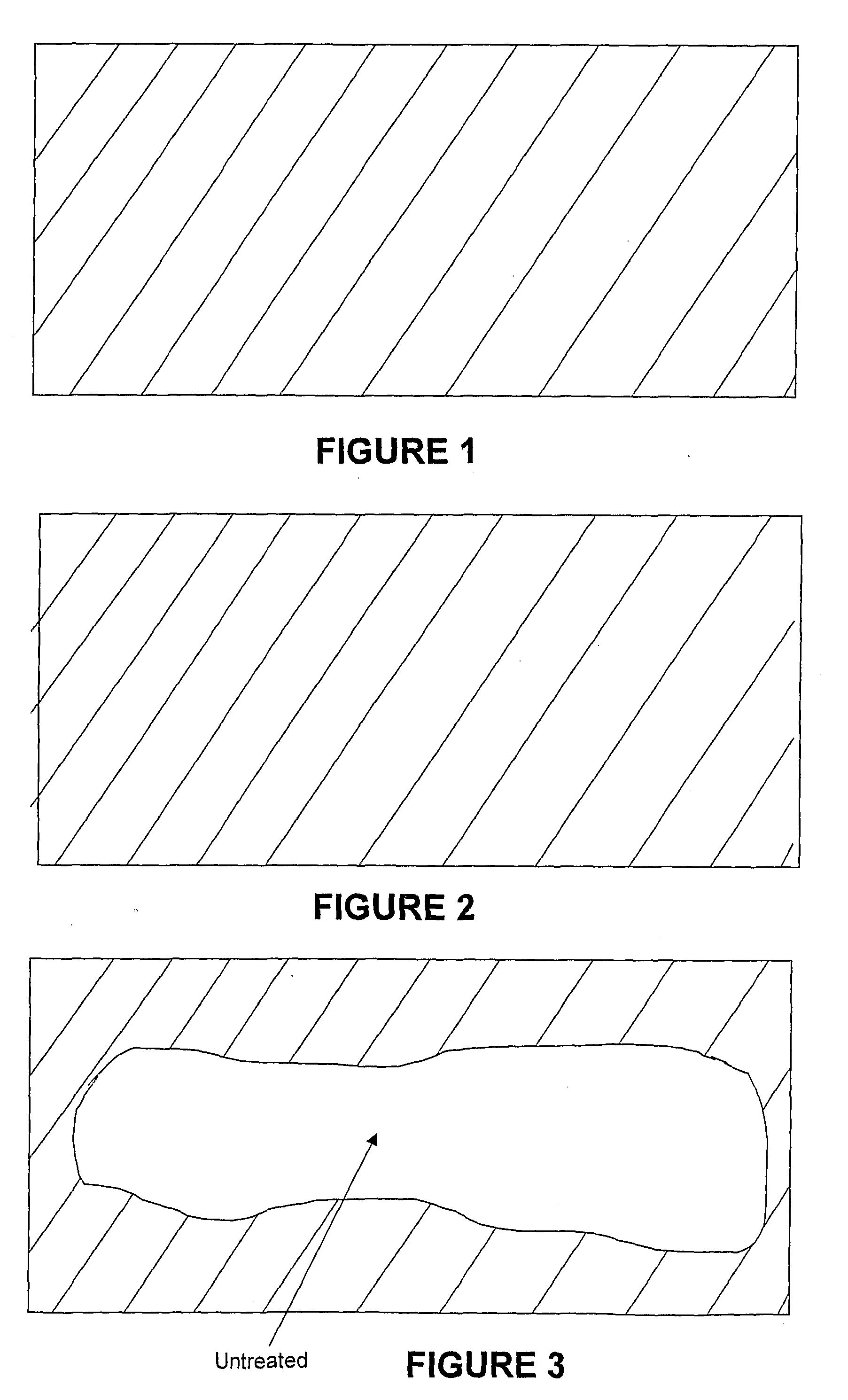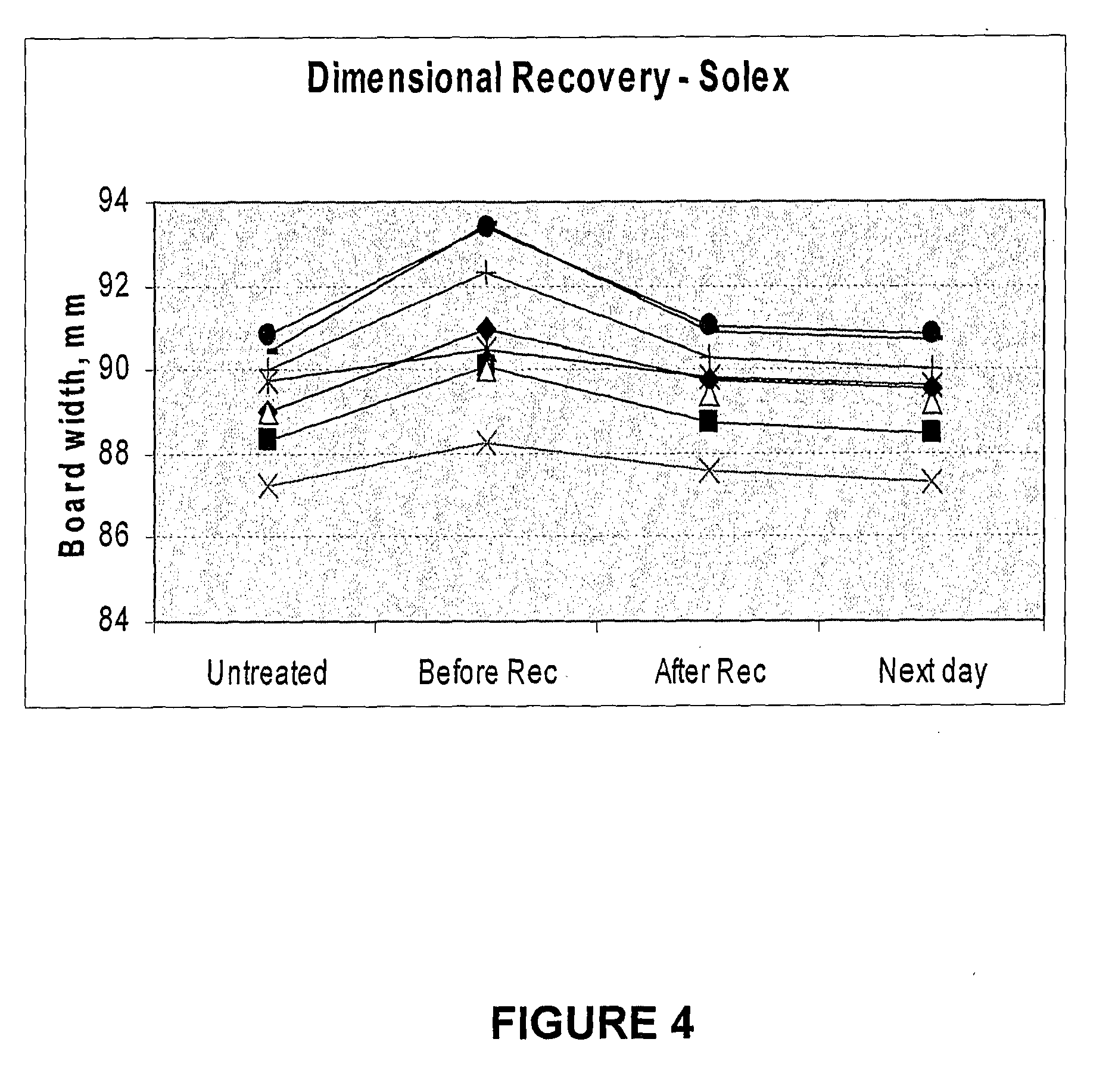Compositions for use in treating organic substances
- Summary
- Abstract
- Description
- Claims
- Application Information
AI Technical Summary
Benefits of technology
Problems solved by technology
Method used
Image
Examples
example 1
[0140]A solution containing 83% m / m triethanolamine borate was prepared in water. Various samples were diluted with either ethanol, water or a range of water / ethanol mixtures. The inventors found that in all proportions stable fully miscible solutions were produced.
Table 1 Illustrates This Stability Window
[0141]
ActiveWater in water - ethanol mix (total formulation) %ingredient10075502825TriethanolamineStableStableStableStableStableboratesolutionsolutionsolutionsolutionsolution
[0142]It is known that neutralised boric acid salts such as triethanolamine borate are not volatile at ambient or slightly elevated temperatures. Therefore in one aspect of this invention where an opportunity to recover solvent using vacuum or RF assisted vacuum is utilised, this can be successfully carried out because the boron compound selected is not volatile.
[0143]Samples of kiln dried pinus radiata were planer gauged to 45 mm by 90 mm cross section. Specific examples were selected of flat sawn material tha...
example 1a
[0145]The end coated samples were treated by applying a vacuum of −85 kPa for 5 minutes, then flooding with the preservative fluid and releasing the vacuum. After 30 seconds the fluid was removed.
example 1b
[0146]A similar schedule was tried wherein a vacuum of −85 kPa was applied, the substrate and chamber flooded with treating fluid and the vacuum lowered to −70 kPa. The excess fluid was then removed and the vacuum completely released.
[0147]In both methods above samples treated with preservative in ethanol or 60:50 ethanol water mixtures gave complete penetration (see FIGS. 1 and 2). However preservative in water alone only penetrated one third of the distance into the sample as shown in FIG. 3.
[0148]It was determined that the samples of example 1a have an uptake of 48 litres per cubic metre and 1b having an uptake of 28 litres per cubic metre.
[0149]Most significantly the total uptake in the above examples could be less than 30 litres per cubic metre and yet achieve full penetration. Thus one can see that water can be included in such a fluid without undue rewetting of the substrate.
[0150]The inventors have found that the uptake can be altered by variations in the vacuum or partial v...
PUM
 Login to View More
Login to View More Abstract
Description
Claims
Application Information
 Login to View More
Login to View More - R&D
- Intellectual Property
- Life Sciences
- Materials
- Tech Scout
- Unparalleled Data Quality
- Higher Quality Content
- 60% Fewer Hallucinations
Browse by: Latest US Patents, China's latest patents, Technical Efficacy Thesaurus, Application Domain, Technology Topic, Popular Technical Reports.
© 2025 PatSnap. All rights reserved.Legal|Privacy policy|Modern Slavery Act Transparency Statement|Sitemap|About US| Contact US: help@patsnap.com



